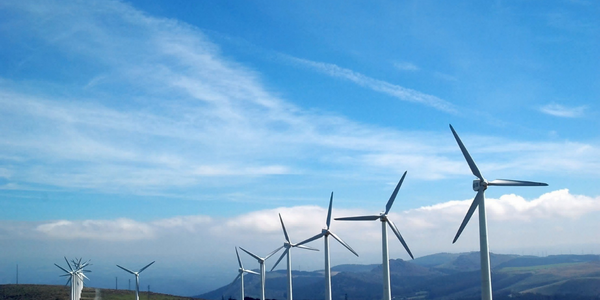Building an IoT Solution Using Eseye and AWS to Provide Customers in East Africa with Secure Access to Solar Energy
---nasdaq--amzn_14.jpg)
公司规模
Mid-size Company
地区
- Africa
产品
- SolarNow solar-powered equipment
- Eseye AnyNet Secure SIM
- AWS IoT Core
技术栈
- AWS IoT Device Defender
- Amazon Kinesis
- Amazon Machine Learning
实施规模
- Enterprise-wide Deployment
影响指标
- Customer Satisfaction
- Productivity Improvements
- Environmental Impact Reduction
技术
- 网络与连接 - 蜂窝
- 分析与建模 - 实时分析
适用行业
- 可再生能源
- 公用事业
适用功能
- 维护
- 质量保证
用例
- 远程资产管理
- 预测性维护
- 能源管理系统
服务
- 系统集成
- 数据科学服务
关于客户
SolarNow is a for-profit social business with Dutch origins that is passionate about transforming lives by providing quality solar energy products and financing solutions in East Africa. Beginning its operations in Uganda in 2011, the company has provided solar energy at affordable prices to over 35,000 customers. SolarNow addresses the unmet need for sustainable, quality solar energy in the region through the provision of solar-powered equipment, appliances, and services to remote or off-grid homes, farms, schools, health centers, and businesses. To make a deployment achievable, the company offers affordable and flexible credit with every solution, a key feature in widening access to solar energy in the East African market.
挑战
SolarNow, a for-profit social business, provides solar energy products and financing solutions in East Africa. The company faced challenges in identifying common device pain points for customers and optimizing device longevity. As SolarNow’s customer base grew, the company began identifying areas for business growth and improvement. They noted pain points for customers, such as a short battery lifespan or inefficient solar panel usage, that they felt they could proactively address and prevent these issues using Internet of Things (IoT) technology to build a connected device and monitoring solution. SolarNow needed to be able to enhance access to and use of device data to remotely monitor system performance and alert customers of inefficient device usage.
解决方案
SolarNow chose to work with Eseye, an Amazon Web Services (AWS) IoT Competency Partner and a leading global machine to machine (M2M) cellular connectivity and device provider in the IoT space. Eseye’s proven customer success in the energy industry and within developing communities appealed to the SolarNow team. Eseye connects SolarNow’s devices with reliable global cellular network data through the Eseye AnyNet Secure SIM solution. The SIM’s enhanced features, such as secure integration with the AWS IoT cloud, Bespoke Firewalls, and International Mobile Equipment Identity (IMEI) locking enable SolarNow to remotely and securely activate, provision, authenticate, and certify deployed devices over-the-air. To make it simple for SolarNow to use the AnyNet Secure solution, Eseye has integrated its services with the AWS IoT Core, which enables lifecycle management, certificate delivery, analytics, and anomaly detection at the click of a button.
运营影响
数量效益

Case Study missing?
Start adding your own!
Register with your work email and create a new case study profile for your business.
相关案例.

Case Study
Remote Monitoring & Predictive Maintenance App for a Solar Energy System
The maintenance & tracking of various modules was an overhead for the customer due to the huge labor costs involved. Being an advanced solar solutions provider, they wanted to ensure early detection of issues and provide the best-in-class customer experience. Hence they wanted to automate the whole process.

Case Study
Vestas: Turning Climate into Capital with Big Data
Making wind a reliable source of energy depends greatly on the placement of the wind turbines used to produce electricity. Turbulence is a significant factor as it strains turbine components, making them more likely to fail. Vestas wanted to pinpoint the optimal location for wind turbines to maximize power generation and reduce energy costs.

Case Study
IoT Solutions for Smart City | Internet of Things Case Study
There were several challenges faced: It is challenging to build an appliance that can withstand a wide range of voltage fluctuations from as low at 90v to as high as 320v. Since the device would be installed in remote locations, its resilience was of paramount importance. The device would have to deal with poor network coverage and have the ability to store and re-transmit data if networks were not available, which is often the case in rural India. The device could store up to 30 days of data.

Case Study
Automation of the Oguz-Gabala-Baku water pipeline, Azerbaijan
The Oguz-Gabala-Baku water pipeline project dates back to plans from the 1970’s. Baku’s growth was historically driven by the booming oil industry and required the import of drinking water from outside of the city. Before the construction of the pipeline, some 60 percent of the city’s households received water for only a few hours daily. After completion of the project, 75 percent of the two million Baku residents are now served around the clock with potable water, based on World Health Organization (WHO) standards. The 262-kilometer pipeline requires no pumping station, but uses the altitude differences between the Caucasian mountains and the capital to supply 432,000 m³/d to the Ceyranbatan water reservoir. To the people of Baku, the pipeline is “the most important project not only in 2010, but of the last 20 years.”

Case Study
Siemens Wind Power
Wind provides clean, renewable energy. The core concept is simple: wind turbines spin blades to generate power. However, today's systems are anything but simple. Modern wind turbines have blades that sweep a 120 meter circle, cost more than 1 million dollars and generate multiple megawatts of power. Each turbine may include up to 1,000 sensors and actuators – integrating strain gages, bearing monitors and power conditioning technology. The turbine can control blade speed and power generation by altering the blade pitch and power extraction. Controlling the turbine is a sophisticated job requiring many cooperating processors closing high-speed loops and implementing intelligent monitoring and optimization algorithms. But the real challenge is integrating these turbines so that they work together. A wind farm may include hundreds of turbines. They are often installed in difficult-to-access locations at sea. The farm must implement a fundamentally and truly distributed control system. Like all power systems, the goal of the farm is to match generation to load. A farm with hundreds of turbines must optimize that load by balancing the loading and generation across a wide geography. Wind, of course, is dynamic. Almost every picture of a wind farm shows a calm sea and a setting sun. But things get challenging when a storm goes through the wind farm. In a storm, the control system must decide how to take energy out of gusts to generate constant power. It must intelligently balance load across many turbines. And a critical consideration is the loading and potential damage to a half-billion-dollar installed asset. This is no environment for a slow or undependable control system. Reliability and performance are crucial.

Case Study
GPRS Mobile Network for Smart Metering
Around the world, the electricity supply industry is turning to ‘smart’ meters to lower costs, reduce emissions and improve the management of customer supplies. Smart meters collect detailed consumption information and using this feedback consumers can better understand their energy usage which in turn enables them to modify their consumption to save money and help to cut carbon emissions. A smart meter can be defined in many ways, but generally includes an element of two-way communication between the household meter and the utility provider to efficiently collect detailed energy usage data. Some implementations include consumer feedback beyond the energy bill to include online web data, SMS text messages or an information display in consumers’ premises. Providing a cost-effective, reliable communications mechanism is one of the most challenging aspects of a smart meter implementation. In New Zealand, the utilities have embraced smart metering and designed cost effective ways for it to be implemented. The New Zealand government has encouraged such a move to smart metering by ensuring the energy legislation is consistent with the delivery of benefits to the consumer while allowing innovation in this area. On the ground, AMS is a leader in the deployment of smart metering and associated services. Several of New Zealand’s energy retailers were looking for smart metering services for their residential and small business customers which will eventually account for over 500,000 meters when the multi-year national deployment program is concluded. To respond to these requirements, AMS needed to put together a solution that included data communications between each meter and the central data collection point and the solution proposed by Vodafone satisfied that requirement.






